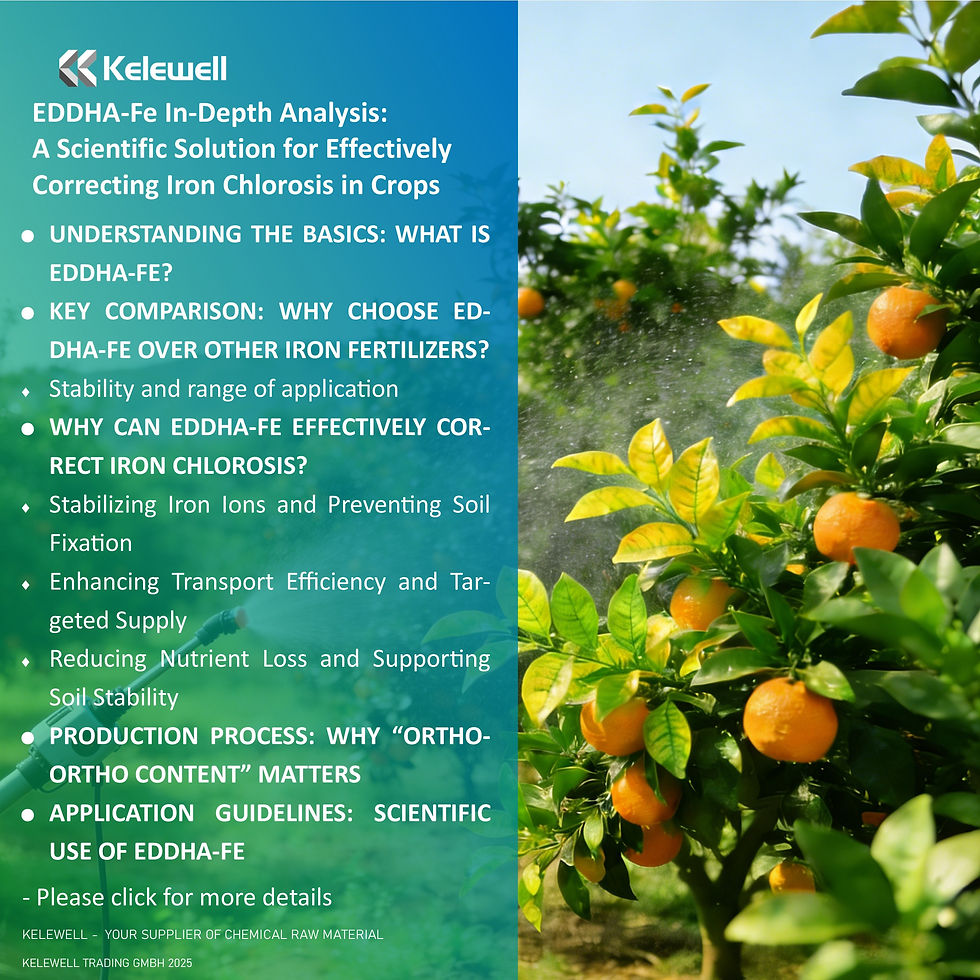Global Fertilizer Market Updates: Pakistan Issues Tender for 150,000 Tons of Urea and Thailand's Urea Imports Increase by 15% in the First Half of 2024…
- Antonia Z

- Aug 5, 2024
- 2 min read
Pakistan Issues Tender for 150,000 Tons of Urea
On July 29, the Pakistani company TCP launched a tender for the import of 150,000 tons of bulk urea, to be traded on CFR Karachi/Gwadar terms. Six companies participated in the bidding, including West Trade, Mercury DMC, ABG Trading, SINEPO, Singapore, Torbert DMC, and Trammo GmbH. West Trade submitted the lowest bid at $358.99 per ton. The first shipment of urea is expected to arrive in Karachi on August 16, 2024.
Thailand's Urea Imports Increase by 15% in the First Half of 2024
In the first half of 2024, Thailand's urea imports increased by 15% to 1.4 million tons, mainly due to rising urea fertilizer prices and importers building up inventory between January and March. The import volume in the first quarter was 722,000 tons, up 84% year-on-year, but from April to June, the import volume fell by 17% year-on-year to 699,000 tons.
The import growth primarily came from the Middle East and Brunei. Deliveries from Saudi Arabia increased by 17% year-on-year, Oman by 78%, and Brunei's imports more than doubled. In contrast, imports from Malaysia fell by 41%, but Brunei's increase offset Malaysia's decrease to some extent.
Forecast:
Thailand's urea imports are expected to remain stable in the next quarter due to strong domestic demand and continuous purchasing by farmers. In July, strong rice export prices in Thailand and Mali could also encourage farmers to invest in fertilizers.
Decline in Domestic Potassium Chloride Production and Increase in Potassium Sulfate Production in China
In 2024, China's total domestic potash supply increased, but the production of domestic potassium chloride and potassium sulfate showed opposite trends. The production of domestic potassium chloride gradually decreased, while the production of potassium sulfate continued to increase.
From January to July, the production of domestic potassium chloride reached 3.216 million tons, down 10.53% year-on-year; potassium sulfate production was 2.7568 million tons, up 27.11% year-on-year. The decline in potassium chloride production was mainly due to the low operating rates of facilities at Qinghai Salt Lake and Golmud Zangge, as well as incomplete consolidation of small factories. The increase in potassium sulfate production was primarily due to higher output from Mannheim-process potassium sulfate plants, which maintained high operating rates.
China's potassium chloride imports increased, with a total import volume of 6.4317 million tons from January to June, up 23.25% year-on-year. Import volumes in January and March both exceeded 1 million tons. Overall, China's total potash supply increased significantly in 2024. In the first quarter, the domestic potash market was oversupplied, leading to price drops; in the second quarter, the market turned profitable, and prices rose. After the 2024 China potash contract was signed at $273 per ton, prices slightly decreased but not significantly.
Forecast:
Looking ahead to the autumn market, demand is expected to be somewhat insufficient, and supply remains highly concentrated, leading to a clear balance between supply and demand. Potash market prices are expected to fluctuate slightly in a less optimistic outlook, but the extent of the fluctuations will be relatively limited.
Attention: The above information is for commercial reference only due to the diversity of information collected, and Kelewell is not responsible for the authenticity of the data.




Comments